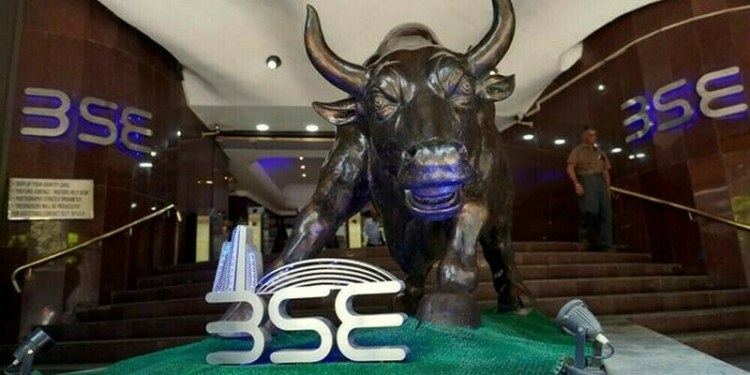The U.S. cost of living was unchanged in November, showing it will take time for inflation to approach the level desired by Federal Reserve officials, who begin their policy meeting today.
Cheaper gasoline, new cars and clothing held the consumer-price index in check after a 0.1% drop the prior month, according to data today from the Labor Department in Washington. The median forecast in a Bloomberg survey of economists called for a 0.1% gain. Prices rose 1.2% in the 12 months to November after a 1% year-over-year advance in October.
“Faster inflation is a no-show,” said Stuart Hoffman, chief economist at PNC Financial Services Group Inc. in Pittsburgh, who correctly projected no change in the CPI. “We’re still stuck in a below-2% inflation environment, below the Fed’s goal.”
Central bankers are debating the outlook for inflation and the economy as they consider reducing $85 billion of monthly bond purchases designed to support the four-year expansion. Underscoring limited cost pressures, American Eagle Outfitters Inc. is among retailers offering more discounts to attract shoppers this holiday season.
While limited inflation gives the Fed room to maintain unprecedented stimulus, data on retail sales, manufacturing, employment and housing indicate the economy is picking up heading into 2014.
Builder Optimism
Another report today showed builder optimism this month matched the highest level in eight years, indicating the industry is confident the increase in mortgage rates that slowed sales will prove temporary. The National Association of Home Builders/Wells Fargo gauge rose to 58, exceeding the highest projection in a Bloomberg survey, from 54 in November.
“The recent spike in mortgage rates has not deterred consumers as rates are still near historically low levels,” David Crowe, chief economist at the builders association, said in a statement. “We continue to look for a gradual improvement in the housing recovery in the year ahead.”
Stocks declined before Fed policy makers announce plans for their monthly bond-buying plan tomorrow. The Standard & Poor’s 500 Index fell 0.3% to 1,781 at the close in New York.
Thirty-four% of those surveyed by Bloomberg on Dec. 6 projected the Fed will start trimming bond purchases this month, while 26% forecast January, and 40% said March.
Fed’s Bullard
St. Louis Fed President James Bullard, a supporter of the record stimulus, has said the low levels of inflation should mean any reduction in bond buying will be modest until the employment outlook brightens.
Employers added 203,000 jobs in November after 200,000 a month earlier, and the jobless rate fell to a five-year low of 7%, Labor Department figures showed on Dec. 6.
“A small taper might recognize labor-market improvement while still providing the committee the opportunity to carefully monitor inflation during the first half of 2014,” Bullard, a voter on policy this year, said last week in St. Louis. “Should inflation not return toward target, the committee could pause tapering at subsequent meetings.”
In the U.K., inflation unexpectedly slowed in November to the least in four years and moved closer to the Bank of England’s 2% target. Consumer prices rose 2.1% from a year earlier compared with 2.2% the previous month, the Office of National Statistics said today in London.
Core Inflation
Today’s U.S. Labor Department report showed the core measure of inflation, which strips out food and fuel costs that are volatile month to month, rose 0.2% in November from the prior month. The core CPI climbed 1.7% from November 2012, matching the gains in the previous two months.
Estimates of the 83 economists for the overall CPI ranged from a drop of 0.1% to a gain of 0.2% from October, according to the Bloomberg survey. Economists projected the core gauge would also increase 0.1%.
Energy costs fell 1% from a month earlier. Cheaper gasoline has given U.S. households the wherewithal to spend more on other goods and services. The average cost of a gallon of regular gas declined to $3.23 as of Dec. 15 from $3.39 on Oct. 1, according to AAA, the biggest U.S. motoring group.
Retail sales in November rose 0.7%, the most since June, after a 0.6% advance in October, according to a Commerce Department report on Dec. 12. Figures on Dec. 16 from the Fed showed the demand is leading to increased industrial production.
Factory Production
Factory output climbed 0.6% in November after a 0.5% gain, according to the Fed report.
To help spur demand during the busiest shopping period of the year, American Eagle Outfitters, the Pittsburgh-based apparel company, is among businesses reducing prices.
“We continue to operate in the most challenging sector of retail where there has been intense promotional competition and tepid consumer spending,” Chief Executive Officer Robert Hanson said on a Dec. 6 earnings call. “Sales have been promotionally driven, which is pressuring margins.”
Clothing prices in November declined 0.4% after 0.5% decreases in each of the previous two months, today’s Labor Department data showed. New-vehicle prices fell 0.1% for a second month, while home furnishing costs also declined.
SOurce: Bloomberg



























